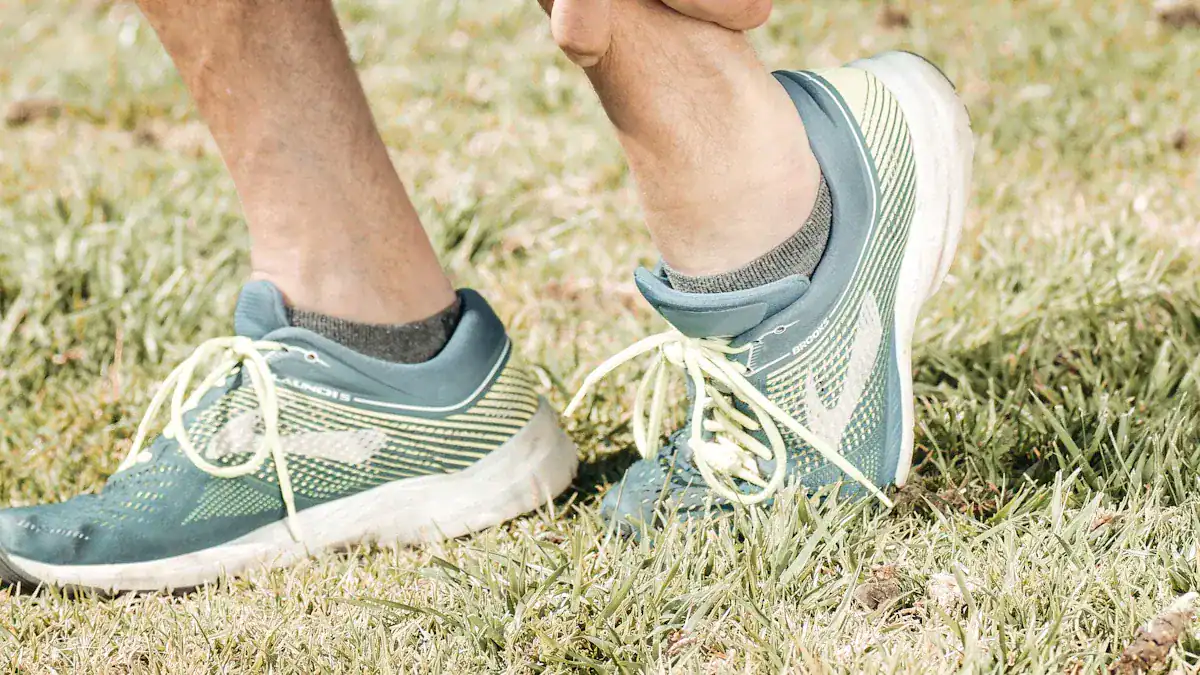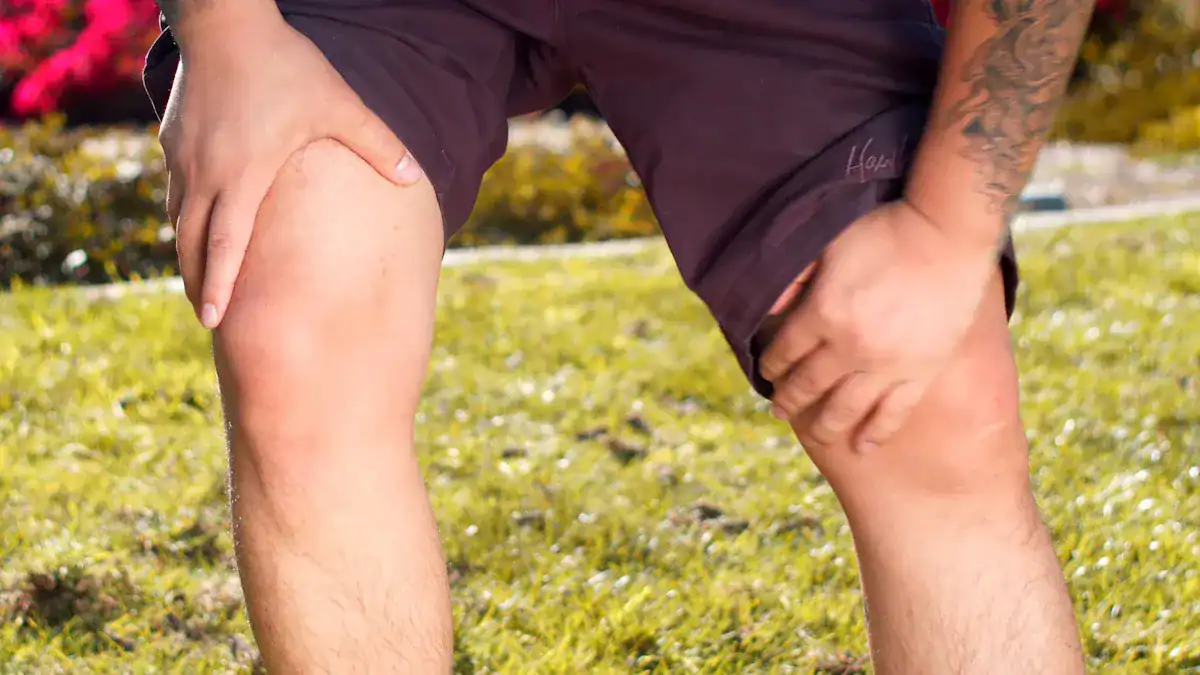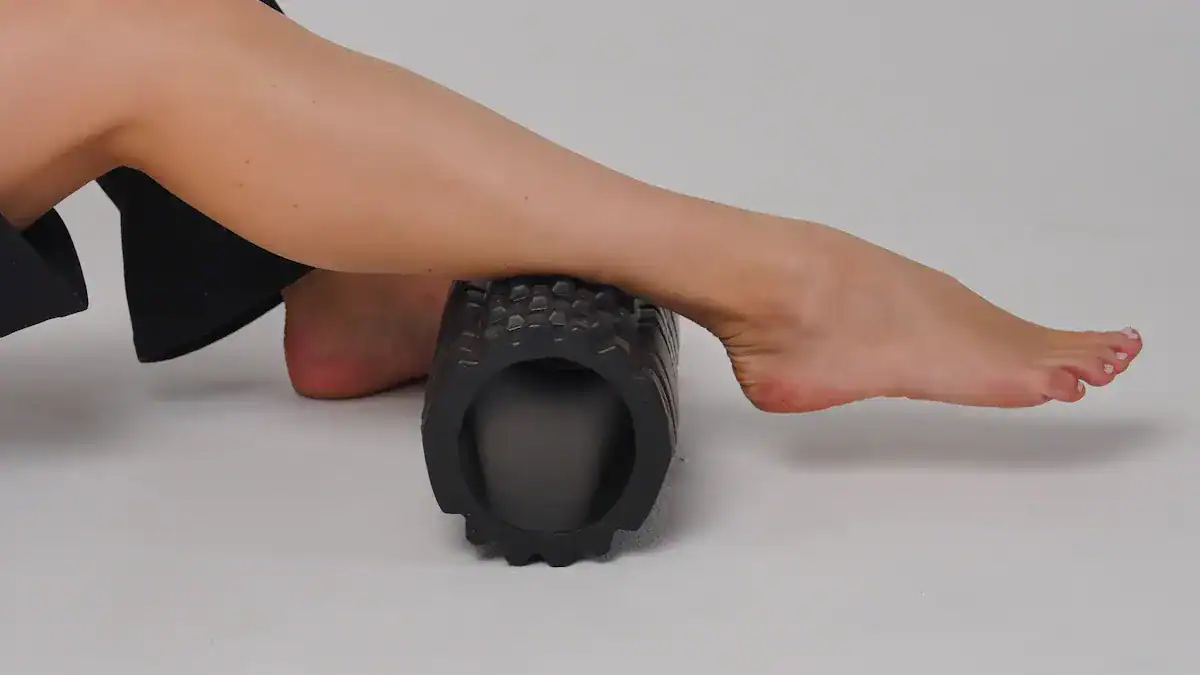
When you experience sudden, sharp calf pain, you know you have a calf muscle injury. Taking immediate action is crucial to minimize pain, reduce swelling, and prevent further damage. For a mild pulled calf muscle, immediate R.I.C.E. application can help you heal within 1-2 weeks. The R.I.C.E. protocol is your first step. This guide gives you actionable steps for those crucial first hours and days after a pulled calf muscle or even a torn calf muscle.
Key Takeaways
Use the R.I.C.E. method right away for a calf injury. This means Rest, Ice, Compression, and Elevation.
Stop any activity that causes pain. Rest helps your calf muscle start to heal.
Apply ice for 10-20 minutes at a time to reduce pain and swelling. Always wrap ice in a cloth.
Use a bandage to wrap your calf. This helps reduce swelling and supports the muscle.
Raise your injured leg above your heart. This helps reduce swelling.
Understanding Your Calf Injury

When you feel that sudden pain in your lower leg, you might wonder exactly what happened. Understanding your injury helps you manage it better. Calf muscle injuries range from mild to severe.
Types of Calf Muscle Injuries: Pulled, Strained, or Torn
Your calf muscle is a group of muscles at the back of your lower leg. A pulled calf muscle or calf muscle strain happens when these muscle fibers stretch too much or tear. Doctors classify these injuries into grades. A Grade 1 injury involves minimal damage to the muscle fibers. A Grade 2 injury means you have a partial calf muscle tear. A Grade 3 injury is a complete torn calf muscle. This is the most severe type of calf muscle tear.
These injuries often occur during high-force activities. You might experience a pulled calf muscle while:
Running, sprinting, or making rapid changes in direction or pace.
Overstretching your calf, for example, when landing from a jump.
Engaging in strenuous or repeated athletic activities.
Making sharp, sudden movements like jumping.
Not stretching or warming up enough before physical activity.
Rapidly extending your calf, often when your toes point towards your leg, causing your ankle to react abruptly.
Symptoms and Identification
Identifying your specific injury helps guide your recovery. The symptoms of calf muscle injuries vary depending on the severity. You will notice different calf strain symptoms between a minor strain and a significant torn calf muscle.
Here is how Grade 1 and Grade 2 calf strains compare:
Feature | Grade 1 Calf Strain | Grade 2 Calf Strain |
|---|---|---|
Muscle Damage | Minimal damage to muscle fibers | Partial tear of muscle fibers |
Discomfort | Slight discomfort or tightness | Moderate to severe pain |
Swelling | Minimal or no swelling | Noticeable swelling and tenderness |
Strength Loss | Mild to no loss of strength | Reduced strength and flexibility |
Initial Pain | Sharp pain at injury time | Requires stopping activity due to pain |
Activity | Often can continue activity | Cannot continue activity |
Bruising/Swelling | N/A | Mild bruising and swelling |
If you have a Grade 3 injury, a complete torn calf muscle, you will likely hear a “pop” sound. You will experience severe pain and cannot put weight on your leg. You might also see significant bruising and swelling.
The R.I.C.E. Protocol: First Steps
When you experience a calf injury, immediate action makes a big difference. The R.I.C.E. protocol is your go-to strategy. This simple yet powerful method helps you manage pain and swelling right away. It sets the stage for better healing. You use the R.I.C.E. method for any acute injury, including a pulled calf muscle.
Rest: Why It’s Crucial
Rest is the first and most important step. You must stop any activity that caused the injury. Continuing to use your injured calf muscle can make the damage worse. It can also delay your recovery. Give your calf muscle time to begin healing. Avoid putting weight on your leg if it causes pain. This initial rest period protects your injured tissues.
Ice: Application for Pain
Applying ice helps reduce pain and swelling. Ice constricts blood vessels. This limits blood flow to the injured area. You should apply ice for 10 to 20 minutes at a time. For acute injuries, 10 to 15 minutes is often enough. You can repeat these icing sessions every few hours. Make sure you allow at least 30 to 40 minutes between sessions. This prevents tissue damage. Icing is most effective during the first 48 to 72 hours after your injury. It helps reduce inflammation and control swelling.
⚠️ Important Ice Precautions:
Never apply ice directly to your skin. Always wrap the ice pack in a thin cloth or towel. This creates a barrier. It prevents frostbite or ice burns.
Keep the ice pack moving slightly to prevent ice burns.
Do not exceed 20 minutes of application. Prolonged exposure can cause damage.
Check your skin regularly for excessive redness or irritation.
Allow your skin to return to normal temperature before reapplying ice. Take at least a 20-minute break.
Compression: Muscle Support
Compression helps reduce swelling. It also provides support to your injured calf muscle. You can use an elastic bandage for compression. This helps prevent fluid buildup in the injured area. Compression also speeds up recovery. It reduces muscle soreness and fatigue. Compression sleeves can also support shin splints and calf strains. They relieve pain and inflammation.
Here is how to apply a compression bandage correctly:
Roll up the bandage if it is not already rolled.
Hold the bandage so the start of the roll faces up.
Keep your leg in a neutral position.
Start wrapping at the furthest end of your limb, usually just above your ankle.
Continue wrapping upwards. Overlap the edges by about an inch each time you go around.
Secure the end with clip fasteners or tape.
Make sure the bandage is snug. It should not be too tight. A bandage that is too tight can cause discomfort, numbness, or tingling. Your toes might also feel cold or look blue. If you notice these signs, loosen the bandage immediately.
Elevation: Swelling Reduction
Elevating your injured leg helps reduce swelling. When you elevate your leg, you raise it above the level of your heart. This position slows blood flow to the injury site. It also helps lower blood pressure in the area. Elevation limits bleeding in the affected area. It encourages drainage from your lymphatic system. This system helps remove excess fluid. You can prop your leg on pillows while sitting or lying down. This simple step significantly aids your calf strain treatment.
Managing Pain and Discomfort

When you experience calf muscle pain, over-the-counter (OTC) medications can help manage your discomfort. These medicines reduce pain and inflammation. You have two main types to consider: NSAIDs and acetaminophen.
OTC Pain Relief
Nonsteroidal anti-inflammatory drugs (NSAIDs) are a good choice for calf muscle injuries. They reduce both pain and swelling. Common OTC NSAIDs include:
Ibuprofen (like Advil or Motrin)
Aspirin
Naproxen (like Aleve)
These medicines are effective for muscle aches, inflammation, stiffness, and sprains. They work by blocking substances in your body that cause inflammation and pain.
Acetaminophen (like Tylenol) is another option. It helps relieve pain but does not reduce inflammation. You can use it if you cannot take NSAIDs. Always follow the dosage instructions on the label. Be aware of potential side effects.
Side Effects Requiring Immediate Medical Attention | Side Effects Usually Not Requiring Medical Attention |
|---|---|
Allergic reactions (skin rash, itching, hives, swelling of face, lips, tongue, or throat) | Headache |
Liver injury (right upper belly pain, loss of appetite, nausea, light-colored stool, dark urine, yellowing skin or eyes, unusual weakness or fatigue) | Nausea |
Severe skin reactions (redness, blistering, peeling, or loosening of the skin, including inside the mouth) | Trouble sleeping |
Upset stomach |
Topical Pain Relief
Topical pain relief options offer another way to manage your calf pain. These are creams, gels, or patches you apply directly to your skin. They can provide localized relief.
Many topical products contain different active ingredients. Counterirritants like menthol, methyl salicylate (oil of evergreen), and camphor create a cooling or warming sensation. This sensation distracts you from the pain. Some topical nonsteroidal anti-inflammatory drugs (NSAIDs) are also available. These can reduce pain with fewer typical NSAID side effects than oral NSAIDs. Capsaicin, derived from hot chili peppers, can help with pain, but it might cause a warm tingling feeling at first. Lidocaine is another ingredient that numbs the painful area. It comes as a gel or patch. While topical salicylates exist, they are not as effective for muscle pain and carry some risks. Choose a product that suits your needs and always read the instructions.
What Not to Do: Preventing Further Damage
When you have a calf injury, knowing what to avoid is as important as knowing what to do. Certain actions can worsen your injury or delay your recovery.
Avoid Initial Heat
Do not apply heat immediately after your injury. Heat application increases skin temperature and circulation. This can worsen inflammation and swelling, which are common in acute injuries. Instead, use cold therapy. Cold therapy reduces pain and swelling. It works by narrowing blood vessels and decreasing internal bleeding in the injured area.
Avoid Immediate Massage
Do not massage your injured calf right away. Massaging a strained muscle too soon can do more harm than good. Working on a strained muscle right after injury is definitely not a good idea. Immediate massage can aggravate the injured area. It increases inflammation. This hinders your body’s natural healing process. It also makes it harder for your body to relax and recover. Massaging too soon works against your body’s protective tightening response. This causes surrounding muscles to contract further instead of relaxing.
Do Not Push Through Pain
You must not push through pain during your recovery. Pushing through calf muscle pain can lead to more severe issues. Returning to exercise too quickly after a calf injury can cause new tears. In rare cases, ruptured calf muscle complications can include compartment syndrome, deep vein thrombosis (DVT), or superficial thrombophlebitis. You should not push through the pain. This can worsen the problem. If calf pain persists for more than 10 days, even after trying common relief methods, you need a professional evaluation. This prolonged pain could signal underlying structural damage, chronic vascular issues, or poor healing. Ignoring calf pain and not resting enough can lead to further complications. These potential long-term issues include:
Stress fractures
Shin splints
Muscle damage
Continuing to exercise when your calves hurt increases your injury risk. Rest until the pain stops.
Beyond Immediate Relief: Healing Your Calf Muscle
Once you have managed the immediate pain and swelling, your focus shifts to healing your calf muscle. This phase involves gentle therapies and a careful return to activity. You help your body repair the damaged tissues.
Gentle Massage: When and How
You can begin gentle movements, including massage, for less severe pulled calf muscle strains within 28 to 48 hours. For any calf muscle injury, gentle massage is appropriate after the acute phase of healing has passed. This is typically after the first 24 to 72 hours. Applying massage during the initial acute phase can worsen the injury. It increases bleeding and prevents healing. Once the acute phase is over, massage helps stimulate blood flow. It mobilizes muscle fibers. It also releases muscle spasms and softens newly formed scar tissue.
To perform a gentle massage:
Sit comfortably. Extend your legs.
Apply lotion or oil to the affected leg.
Use both hands. Begin massaging your calf with gentle, circular motions for 1-2 minutes. This boosts blood flow and warms the tissue.
You can use your thumbs or knuckles. Run them upwards along the calf, starting from the ankle. Use tolerable pressure. Ensure you massage upwards to align with blood vessel valves.
Heat Application: Timing and Benefits
Heat pads can be part of later treatment. You use heat after the initial acute phase. Apply heat after swelling has subsided. Heat application increases blood flow to the area. This facilitates the healing process. It is particularly effective for larger muscle groups like the calf muscle.
Increased circulation supplies oxygen and nutrients. This promotes recovery. Heat therapy promotes vasodilation. This expands blood vessels. It improves blood flow. It delivers more nutrients to the muscle tissue. This process reduces muscle soreness and stiffness. Heat therapy alleviates pain. It relaxes muscles. It reduces muscle spasms. This decreases muscle aches and discomfort.
Gradual Return to Activity
You must gradually return to activity. Start with range-of-motion exercises. Use an elastic band or a wall. Keep movements within a pain-free range. Introduce calf stretches after the acute pain subsides. Your foot bending should improve. Start with short walks on flat, hard surfaces. Progress to climbing stairs. Avoid going down stairs initially. Focus on core exercises that do not strain your calf. Examples include diagonal crunches.
Before returning to running, you should meet specific criteria. You need adequate calf strength.
Demonstrate this with a single-leg heel raise. You must tolerate repeated hopping on a single leg. You should have no clinical signs or symptoms. This means you can perform about 25-30 single-leg heel raises. You should also do 10-20 single-leg hops in place without pain. Progress your strength until you meet sport- or activity-specific benchmarks.
When to Seek Medical Attention
Sometimes, your calf injury needs more than just home care. You must know when to see a doctor. Ignoring serious signs can lead to bigger problems.
Severe Injury Signs
You need immediate medical help if you have severe symptoms. These signs often point to a serious calf muscle tear. Look for severe pain. You might also see swelling and bruising. You may not be able to move your leg.
You cannot put weight on the affected leg. A popping sound at the time of injury is a bad sign. You might feel like someone kicked or struck you hard in the back of the leg. These are all signs of a significant torn calf muscle.
Also, watch for signs of nerve problems. You might feel numbness or tingling along your lower leg. You could have sharp pain from a trapped nerve. Your muscle strength might be reduced. You might even lose strength when extending your foot. Pins-and-needles sensations are another warning. Sometimes, you might experience foot drop. This means you cannot properly lift your foot upward at the ankle. These symptoms mean you need a doctor’s evaluation.
Importance of Diagnosis
Getting a correct diagnosis is very important. A doctor can tell you the exact nature of your calf muscle injury. This helps you get the right treatment. An MRI is often the best way to check muscle injuries. It shows clear pictures of your calf muscle. This helps doctors see the extent of a calf muscle tear.
An untreated calf muscle tear can cause long-term issues. The injured area can fill with scar tissue. This tissue is not as flexible as healthy muscle.
It can lead to repeated injuries. You might also develop tightness in your calf muscles. This can cause problems in your foot, leg, or back. These issues include arch pain, calf cramping, or shin splints. A proper diagnosis helps prevent these complications.
You now understand the critical role of immediate action. The R.I.C.E. protocol is essential for any calf muscle injury. These steps reduce calf pain, control swelling, and prepare you for faster healing. Always listen to your body. Seek professional help for persistent discomfort or signs of a torn calf muscle. You can recover and return to your normal activities.
FAQ
What is the typical recovery time for a pulled calf muscle?
You can expect a mild calf strain to heal in about 1 to 3 weeks. A moderate strain might take 4 to 6 weeks. A severe tear can require several months for full recovery. Always listen to your body.
What activities should you avoid with a calf injury?
You should avoid any activity that causes pain. Do not run, jump, or push off your injured leg. Avoid heavy lifting or sudden movements. Rest your calf to prevent further damage.
What are the signs that your calf muscle is healing?
You will notice less pain and swelling. You can move your leg more easily. You will feel stronger when you walk. You can put more weight on your leg without discomfort.
What is the difference between a calf strain and a calf tear?
A calf strain means you have stretched or slightly damaged muscle fibers. A calf tear means you have a partial or complete break in the muscle tissue. A tear is a more severe injury.




